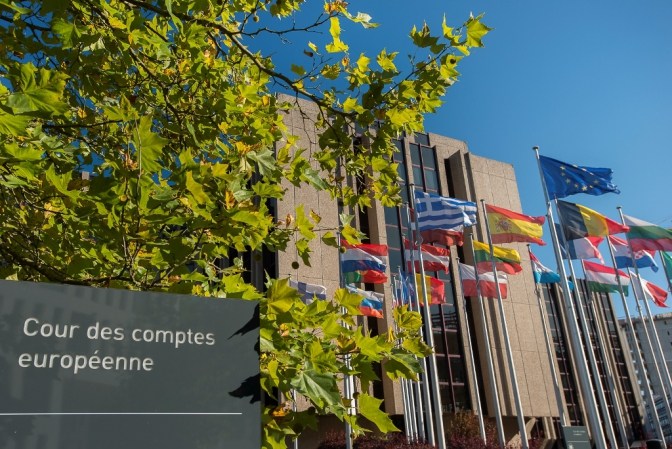Funding to energy efficiency measures in residential buildings are not allocated in cost-effective way, according to a new report from the European Court of Auditors (ECA).
EU has committed to saving 20 % of the EU member states’ projected energy consumption by 2020 and 32.5 % by 2030. However, member states are unlikely to meet the EU 2020 target, as EU energy consumption is rising again since 2014. Data from the Eurostat (February 2020) shows that in 2018 primary energy consumption in the EU member states was 4.9 % above the 2020 targets.
Buildings, in particular residential ones, have the greatest energy consumption in the EU and is also the sector with the biggest available energy savings potential in Europe. In EU households, heating and hot water alone account for 79 % of total final energy use. Energy savings from buildings’ renovations typically derive from better insulation, heating and cooling systems, and lighting.
For 2014-2020, the EU allocated some €14 billion to improving the energy efficiency of buildings, €4.6 billion of which was for residential buildings. In addition, member states budgeted €5.4 billion in national co-financing for improvements to all types of building, around €2 billion of which was for residential buildings.
The auditors visited five member states (Bulgaria, Czechia, Ireland, Italy (Puglia), and Lithuania) that allocated some €2.9 billion of their Cohesion policy funds for energy efficiency in buildings. As regards three of the countries (Czechia, Italy and Lithuania), they also followed-up a previous audit from 2012 to assess to what extent the recommendations from that audit had been implemented.
The main audit question was whether EU co-funded energy efficiency investments in buildings were selected using criteria likely to maximise their cost effectiveness as required in the 2012 Energy Efficiency Directive. The reply to that question is negative and in the report the auditors explain what went wrong in the EU-funded projects.
“EU money must prioritise projects that deliver energy savings and other benefits in a cost-effective way,” said Joao Figueiredo, the ECA member responsible for the report (28 April).
Member states do not always assess initial energy consumption, potential energy savings and investment needs when setting up EU-funded programmes. In addition, national authorities fail to incentivise deep renovations by, for example, allocating higher aid rates to them.
Main findings
While the member states in the sample performed differently, the auditors found shortcomings in all five of them. The follow-up in Czechia and Italy (Puglia) showed a lack of needs assessments as in the previous audit. In Ireland the EU funds essentially substituted national funding. So far only Lithuania has used EU funds to put in place loan schemes for residential buildings.
One problem is the split incentive or owner/tenant dilemma. This refers to a situation where the building owner pays for the energy efficiency upgrades but is unable to recover savings from reduced energy use that accrue to the tenant. As a result, the owner may have little incentive to invest in energy efficiency improvements.
Another problem is “low-hanging fruit” upgrades which may result in the “lock-in effect”. Once some basic energy efficiency measures have been implemented, it becomes less cost-effective to fit more comprehensive measures in the future. This can reduce the potential that the building stock has to play in saving energy in the medium and long-term.
Since simple upgrades with quick payback times are usually financially viable, they should have been financed without public support, or using financial instruments. But even for such upgrades, the average simple payback period for the energy efficiency projects in the sample ranged between 9 years and 24 years, which is much longer than in other projects.
The audit team told The Brussels Times that it was not possible to calculate how much could have been saved if the projects had been more cost-effective? “In all five member states we visited, ‘result’ indicators are of a statistical nature, reporting for example on the energy consumption of all buildings in a member state, not just on buildings renovated with EU-funded projects.”
None of the indicators used in the member states measures the cost-effectiveness of the energy efficiency investments in buildings, despite a recommendation to do so in the previous audit report.
As this was a performance audit, the audit team was not looking for fraud or non-compliance with the rules but they did find that member states did not follow well the Commission’s guidelines in several aspects.
The recommendations made by the auditors address the shortcomings found in the audit and would enhance the cost-effectiveness of EU spending in this area but are not totally accepted by the European Commission.
While the Commission agrees that “cost-effectiveness of the spending is certainly a key element”, it thinks that it “must be considered in the wider context of the cohesion policy objectives for economic, social and territorial cohesion, as well as broader EU policy objectives”. Furthermore, under shared management, project selection is the responsibility of member states’ managing authorities.
M. Apelblat
The Brussels Times

